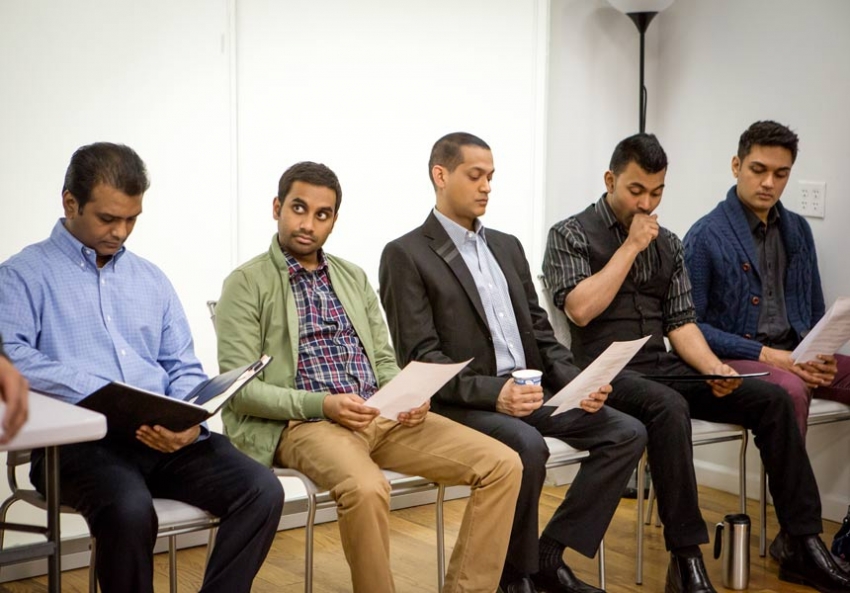Criminalizing Women’s Choice Does Not Combat Problems in Our Society On April 14, 2016, the Prenatal Nondiscrimination Act of 2016 was introduced by the House of Representatives, and then referred to the House of Representatives Judiciary Committee. This panel, made up entirely of men, discussed the merits of criminalizing abortions that are based on the sex and race of the fetus. To be clear, such legislature, if passed, would have the greatest impact on women of color and immigrant women, leaving Asian-American women especially vulnerable to scrutiny for sex-selective abortion.…
Month: May 2016
Non-East Asian Americans
Hey everyone! Today I’ll be talking about being Asian American when you’re background is not from East Asia. In this podcast I interview two guest, Ikra Javed and Anmar Jerjees to talk about their experiences with their Asian identity. Hope you enjoy it!
Course One: Literature
Course One – Literature This course seeks to examine contemporary Asian American literature through its different parts: novels, short stories, and personal essays. While reading all of the texts is highly recommended, the course objectives can be applied to individual texts as well. Prominent themes that emerge throughout the readings in this course include form, national identity, intergenerational family, blackness, and fiction versus nonfiction. Course Readings Novels Native Speaker by Chang-Rae Lee The Other Side of Paradise by Staceyann Chin Short Stories & Essays “The Paper Menagerie” by Ken Liu…
Course Two: Poetry
Course Two – Poetry This course seeks to examine how Asian American poets have utilized page poetry as narrative storytelling. Particularly, it seeks to interrogate how Asian American writers have used poetry in a distinct way from literature to express complex lived realities. Themes in the readings include the production of history, biracialism, postmodernism, Asian futurism, immigrant masculinity, colonialism, and language. Course Readings Collections Engine Empire by Cathy Park Hong Lucky Fish by Aimee Nezhukumatathil Poems “The Gift” by Li-Young Lee “Thaw” by Jane Wong “March of the Hanged Men”…
Course Three – Hybrid Storytelling
This course seeks to expand the conventional understanding of Asian American narrative storytelling beyond literature and poetry. Particularly, it engages with new forms and mediums afforded by the modern era that blur the line between traditional forms. The seminal text in this section, Dictee, is a postmodern work demanding complex analysis and secondary sources. This section also explores spoken word poetry as a unique vehicle for Asian American narrative expression. The central themes in this section include fragmented identity, gender, sexual assault, queerness, imperialism, language, and family. Suggested Readings Hybrid…
Overview: South Asian Americans
Often times South Asian Americans are left out of the “Asian-American” discussion. Many students are unfamiliar with the existence of South Asian Americans and this course aims to bring visibility to this particular sub-section of Asian-American. This course aims to: Describe the geography and diversity of South Asia and to introduce students to which countries are included: Bangladesh, Bhutan, India, The Maldives, Nepal, Pakistan and Sri Lanka. Discover the rich history of immigration regarding South Asians to the United States. Discuss and analyze identity. Who represents Asian-American? Who represents South Asian?…
Lesson 1: Immigration and History
This lesson aims to:Watch Full Movie Online Streaming Online and Download Understand the history of migration into American from South Asia. Use technology and primary sources to find this information. Analyze citizenship regarding South Asians in America. First the instructor should present the resource www.saada.org and demonstrate its purpose and organization. Once the students understand the organization of this site, split the students up into groups and have them create a timeline of South Asian migration to the United States. Near the end of class regroup and have the groups…
Lesson 2: Desi Identity
This lesson plan aims to: Discuss important identity markers within the South Asian population. Apply Arjun Appadurai’s theory of scapes to identity. Reading prior to class: Disjuncture and Difference in the Global Cultural Economy by Arjun Appadarai Discuss identity markers such as religon, ethnicity, language, and country and their importance in the identity of South Asian Americans. This discussion should aim to disaggregate information on the SOuth Asian American community. Explain Appadurai’s scapes theory: Ethnoscapes is the movement of people with the advent of readily available and more affordable transportation . Mediascape is…
Lesson 3: South Asian Americans and Politics
This lesson should aim to: Discuss and analyze the involvement of South Asians in government. In particular look at how Indian-Americans have become governors or senators, how have they used their background to become successful in politics. Read about the political activism of South Asian Americans throughout history. Understand how Islamophobia has impacted South Asians. Discuss how Islamophobia does not only impact Muslim desis. Reading: Uncle Swami by Vijay Prashad Interestingly, two out of the three Indian-American governors represent the Republican party (Bobby Jindal and Nikki Haley). Analyze how both…
Lesson 4: Portrayal of Desis in the Media
The learning outcomes of this class include: Recognizing the different kinds of stereotypes portrayed in the media about South Asian Americans. Understanding the impact of these stereotypes on the perception of South Asian Americans. Recognizing who (gender, ethnicity, religion) is represented as South Asian. How has Youtube changed the dialogue around South Asians in North America. Show pictures and clips in class portraying Desis or Indians in the media. Have a discussion about what these portrayals might means. The clips shown can include: Appu – The Simpson Rajesh “Raj” Koothrappali – The…









